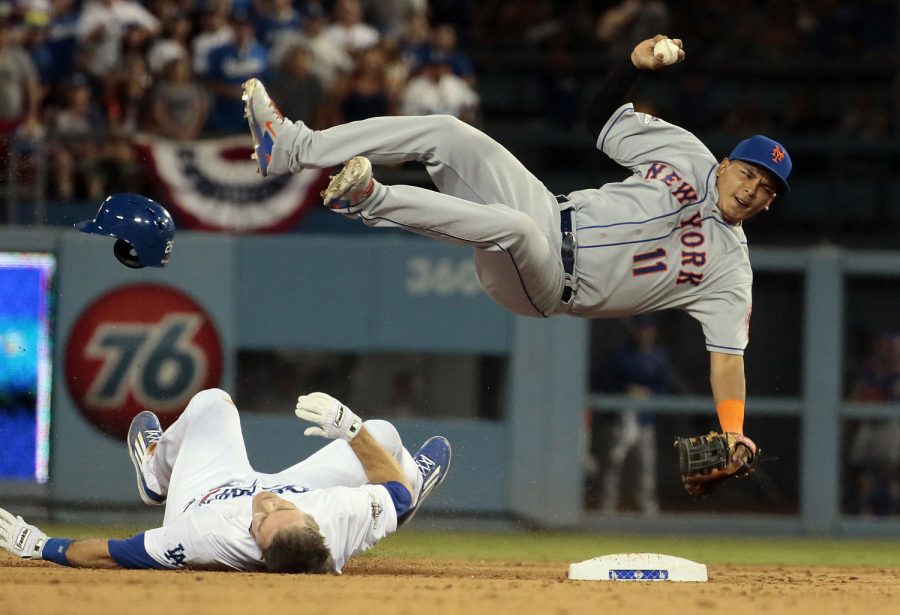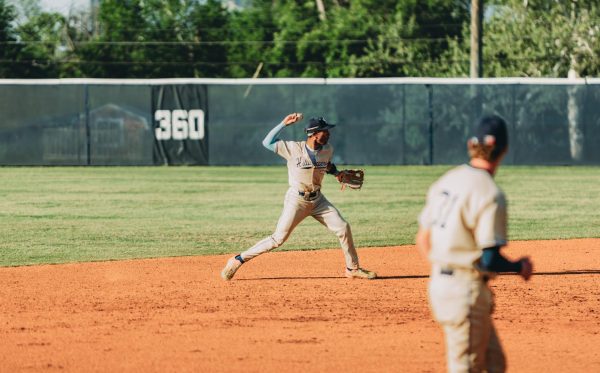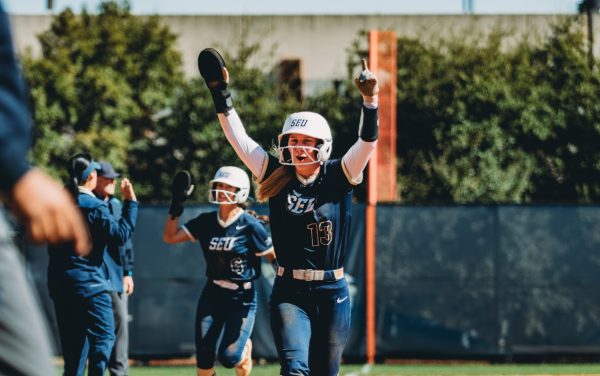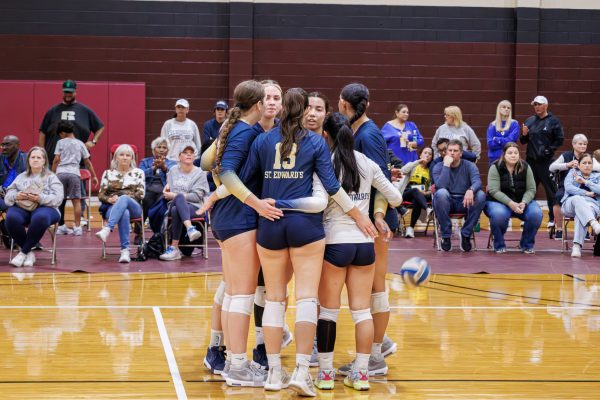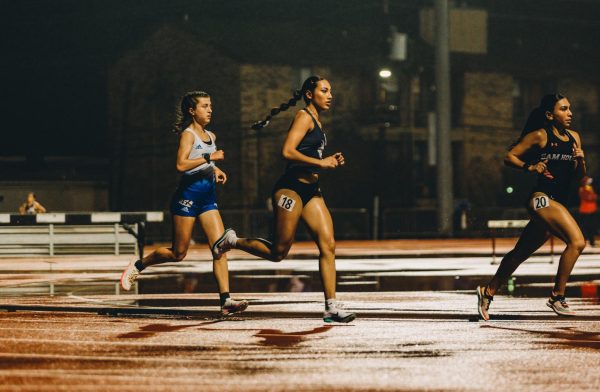The Good, the Bad, the Utley: A closer look at baseball’s new sliding rule
The Los Angeles Dodgers’ Chase Utley upends New York Mets shortstop Ruben Tejada (11) to break up a potential double play in the seventh inning at Dodger Stadium in Los Angeles on Saturday, Oct. 10, 2015. (Robert Gauthier/Los Angeles Times/TNS)
When Major League Baseball (MLB) decided to implement the “Chase Utley” sliding rule at the start of the season for player safety — not everyone was pleased. Only three games into the season, the baseball world got to see how costly this new rule can be.
This is the scene: It was Opening Week. The Tampa Bay Rays are beating the Blue Jays 3-2. It’s the bottom of the ninth inning, one out, and the Blue Jays are hoping for a late rally on April 5.
Rays challenge call that J Bautista didn’t violate rule 6.01(j); call overturned, violation: https://t.co/gZO9nEcqxb pic.twitter.com/7O21hhws1u
— MLB Replay (@MLBReplays) April 6, 2016
Blue Jays outfielder José Bautista slid onto second base, as the Rays’ second baseman’s throw to first base was off target — causing the Blue Jays to score two runs and take a 4-3 win. …
However, the Rays challenged Bautista’s slide, saying he interfered with the Rays’ second baseman Logan Forsythe’s throw to first base. Bautista was already the second out, but upon further review, this rule infraction caused the Blue Jays runner at first base to be the third and final out, so the Rays won 3-2.
Rule 6.01(j), better known as “the Chase Utley rule” was created after Utley broke infielder Ruben Tejada’s leg on a slide into second base during last year’s playoffs.
“We’re happy we won,” Rays manager Kevin Cash said. “I can understand the frustration on the other side.”
While the Rays now celebrated this rule working in their favor — the Blue Jays were more than angry at how the rule has made the game of baseball softer.
Blue Jays manager John Gibbons said, “We had a chance to win and take the lead. It’s a joke. It’s a shame. I get the intent. You go after somebody, you hurt somebody, I get that. But that’s been baseball forever. Maybe you ought to run and get out of the way.”
After this game, several baseball nuts tried to explain and justify both sides of the rule as if they were the ones holding the rule book, so here’s an explanation straight from the horse’s mouth.
The slide rule starts by describing the parts of a legal slide into second base:
• Slide prior to reaching the base.
• Slide so you are able to and attempt to reach or touch the base.
• Slide so you are able to and attempt to stay on the base.
• Do not change your pathway to the base.
“Runners who follow those four rules are allowed to take out the fielder legally, according to the rule. People at MLB and the MLB Players Association, who together negotiated the changes, expect the rule to encourage fielders to stand on the back of the second-base bag, where he’d likely be safe if the runner abides by the standards. Slides that do not will result in an automatic double play, sources said” to Jeff Passon of Yahoo Sports.
Usually the rules of MLB take a while to reach NCAA baseball, but not in this case — as college baseball had a similar rule in place even before MLB.
“We already have a rule in place in college that is more restrictive than the MLB rule,” St. Edward’s University Baseball Head Coach Rob Penders said. “We have it and you must slide directly into the base.”
Penders also thinks this new rule is a good idea for professional baseball, as it “will help keep the players safe.”


